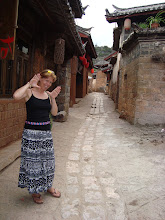
Class schedules dictated that I put down Homer's
The Iliad and take up Shakespeare’s
Henry IV, Part 1, but shortly after I picked Henry up, there he was... Homer
. In Act II, the robbers are planning their crime and one says to the other:
There are other Troyans that thou dream’st not of, the which for sport sake are content to do the profession some grace; that would (if matters be looked into) for their own credit sake make all whole. —Act II, scene I, lines 71-75
What?!? What are Trojans doing in Shakespeare? I’ve found that when reading weighty texts, it’s always good to keep a scholar close at hand, so I turned to Isaac Asimov. According to Asimov,
the references to Troyans (Trojans) harks back to the old legends of the siege of Troy…the classical legends depicted them as bravely defending their city, and later legends had them the ancestors of the Romans and the British. With all this favorable notice, the word came to mean “a good fellow” or “a fine chap (346).
So… 2000 years later, in Shakespeare’s time, a Trojan has become a synonym for a fine, worthy person. Hmmm…
Like The Iliad, Henry is all about honor and its counterparts, shame and hubris, so I wasn’t that surprised when a few pages later I ran into Achilles, but this time in the character of Hotspur (as described by Worcester):
…amend this fault.
Though sometimes it show greatness, courage, blood—
And that’s the dearest grace it renders you—
Yet often times it doth present harsh rage.
Defect of manners, want of government,
Pride, haughtiness, opinion, and disdain;
The least of which haunting a nobleman
Loseth men’s hearts, and leaves behind a stain
Upon the beauty of all parts besides,
Beguiling them of commendation.
—Act III, scene I, lines 179-188
I know from the play’s overview that Prince Henry will be forced to choose between honor and “life force“ (as exemplified respectively by Hotspur and the irreverent Falstaff). I don’t know how the Prince will forge his own new heroic path… I do know that by Shakespeare’s time war is not as glorious as it is in Homer’s. Lots to think about…
Shakespeare, William.
Henry IV, Part One. Signet Classics: New York. 1986. Print.
Asimov, Isaac.
Asimov’s Guide to Shakespeare. Doubleday: New York. 1970. Print.












